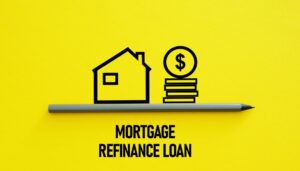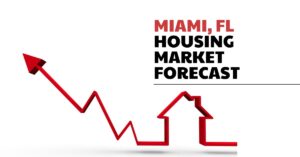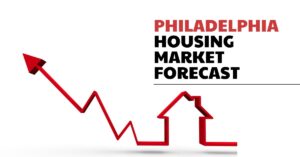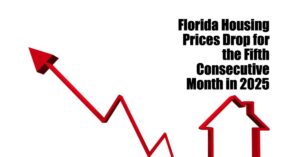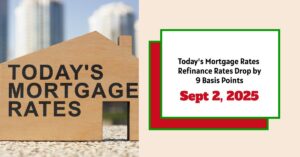Feeling overwhelmed by the constant ups and downs of mortgage rates? You're not alone. The good news is that today, September 4, 2025, the national average 30-year fixed refinance rate has dropped slightly. According to Zillow's latest data, it's sitting at 6.79%, a decrease of 5 basis points from last week's average. This small dip could be a sign of more significant shifts to come, especially with the Federal Reserve hinting at potential rate cuts.
Let's break down what this slight decrease means for you, what's driving these changes, and how you can make the smartest decision for your financial future.
Mortgage Rates Today: 30-Year Fixed Refinance Rate Drops by 5 Basis Points
Refinance Rate Snapshot: A Detailed Look
Here's a quick look at how different refinance rates are trending right now:
- 30-Year Fixed Refinance Rate: 6.79% (Down 5 basis points)
- 15-Year Fixed Refinance Rate: 5.56% (Up 3 basis points)
- 5-Year ARM Refinance Rate: 7.58% (Up 21 basis points)
As you can see, while the 30-year fixed rate experienced a small decrease, other rates are actually on the rise. This underscores the importance of carefully considering your individual financial situation and goals before making any moves.
Is the Dip Significant? My POV
Okay, a 5-basis-point drop might not seem like much, but even slight shifts can sometimes present an opportunity, especially if the broader trend points downward. Personally, I always keep a close eye on the 10-year Treasury yield, which is a key benchmark for mortgage rates. As of August 29, 2025, the 10-year Treasury yield was around 4.23%. The spread between this and the mortgage rate reflects what lenders charge for risk and profit. The closer these two get, the better the deal for the borrower.
The Federal Reserve's Influence: The Big Picture
The Federal Reserve's monetary policy decisions are a major deciding factor in the rate trends. Let's take a brief look:
- Pandemic Recovery to Rate Hike Cycle (2021-2023): The Fed increased the rate to 5.25 percentage points to contain inflation rates.
- The Pivot to Cuts (Late 2024): The Fed rate was cut three times reducing it by approximately 1 percentage point,
- 2025: A Year of Waiting and Anticipation: No increases or cuts for five consecutive months.
The Fed is caught between a rock and a hard place right now. They want to bring inflation down, but they also don't want to stifle economic growth.
Market Signals: What Are the Experts Saying?
Tools like the CME FedWatch Tool suggest a high probability of a Fed rate cut at the September 16-17 meeting. The market is predicting an 85-95% chance of a rate cut for three key reasons:
- Cooling Inflation: The CPI has moderated to 2.7%, moving closer to the Fed's target.
- Weakening Labor Market: A rise in unemployment to 4.2% provides the Fed with justification to act.
- Predicted Slowdown: Forecasts point to an economic cooldown, increasing the need for preemptive stimulus.
These signals are vital. I have studied and seen that experts' predictions impact the market. If the majority believe in a cut, that means you also need to start preparing.
What a Rate Cut Could Mean for YOU
If the Fed does cut rates in September, we could see mortgage rates begin a more sustained downward trend, potentially pulling rates towards 6% by the end of the year. This could translate to lower borrowing costs, boost business investment, and potentially even drive changes in the stock and bond markets.
Refinance: Is it worth it?
- Lower Rate Threshold: A common yardstick is that if you can lower your rate by at least 0.5% to 1%, refinancing might make sense.
- Break-Even Point: It involves calculating how long it will take for your monthly savings to offset the costs associated with refinancing.
- Long-Term Financial Goals: Refinancing to a shorter term can save you money on interest and help you pay off your mortgage faster.
Given the current economic conditions and the strong expectation of a September rate cut, it’s something to consider if you're looking to save money in the long run.
Recommended Read:
30-Year Fixed Refinance Rate Goes Down by 6 Basis Points on August 30, 2025
Here's What To Do Next
- Current Homebuyers: Hang tight – the upcoming September meeting could bring some relief.
- Looking to Refinance: Keep a close eye on the Fed's decisions and be ready to act if rates start to drop. Those with rates above 7% should closely monitor the September meeting, as it could unlock a new wave of refinancing opportunities.
- Real Estate Investors: Pay close attention to the bond market, as it's already pricing in future rate cuts. I would follow this for a short-term trend.
What About The Future?
The Fed anticipates gradual easing, with rates potentially settling near 2.25%-2.5% by 2027.
My Thoughts
While it's impossible to predict the future with certainty, all signs point towards a potential easing of mortgage rates in the near future. As someone who has followed the market closely, I believe this is a time to be informed and prepared. Keep an eye on the Fed's decisions, track the 10-year Treasury yield, and consult with a financial advisor to determine the best course of action for your unique situation.
Maximize Your Mortgage Decisions in 2025
Thinking about whether to refinance now? Timing is critical, and having the right strategy can save you thousands over the life of your loan.
Norada's team can guide you through current market dynamics and help you position your investments wisely—whether you're looking to reduce rates, pull out equity, or expand your portfolio.
HOT NEW LISTINGS JUST ADDED!
Talk to a Norada investment counselor today (No Obligation):
(800) 611-3060
Recommended Read:
- When You Refinance a Mortgage Do the 30 Years Start Over?
- Should You Refinance as Mortgage Rates Reach Lowest Level in Over a Year?
- NAR Predicts 6% Mortgage Rates in 2025 Will Boost Housing Market
- Mortgage Rates Predictions for 2025: Expert Forecast
- Half of Recent Home Buyers Got Mortgage Rates Below 5%
- Mortgage Rates Need to Drop by 2% Before Buying Spree Begins
- Will Mortgage Rates Ever Be 3% Again: Future Outlook
- Mortgage Rates Predictions for Next 2 Years
- Mortgage Rate Predictions for Next 5 Years
- Mortgage Rate Predictions for 2025: Expert Forecast
